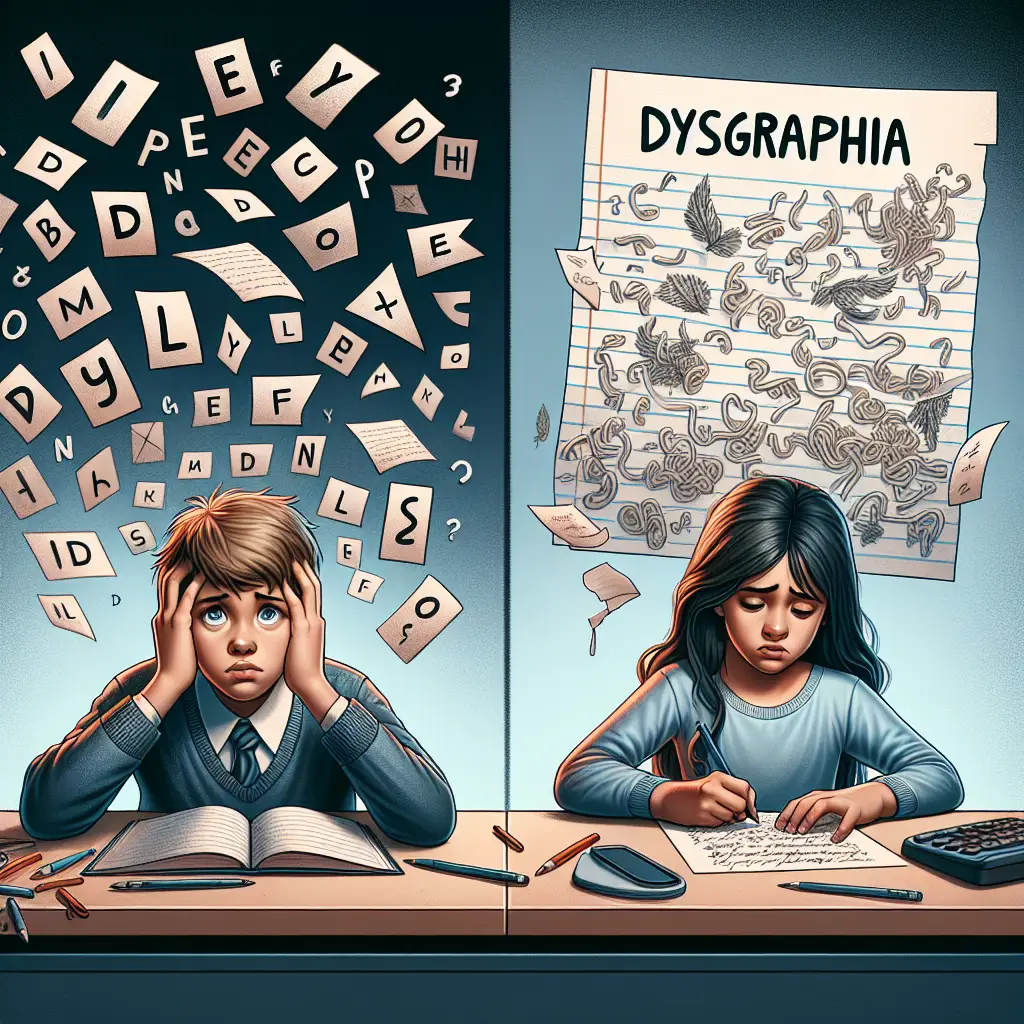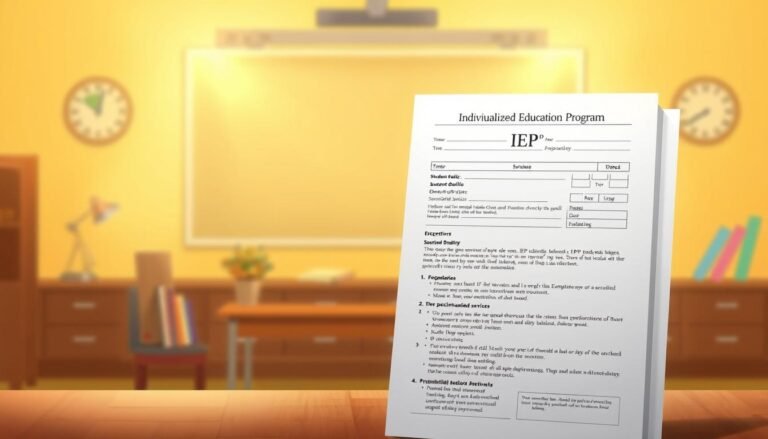
Dyslexia and Dysgraphia: Unpacking the Distinctions for Better Support
Introduction
Imagine sitting in a classroom, surrounded by classmates who seem to effortlessly read aloud while you struggle to decipher even a single word. This experience is common for many individuals with dyslexia, a learning difference that affects reading fluency and decoding abilities. Now, consider the student who can read but faces challenges when trying to express thoughts on paper—this is often a sign of dysgraphia, a disorder affecting handwriting and fine motor skills. Understanding these two conditions is vital not just for fostering academic success but also for nurturing emotional resilience. In this article, we are diving deep into Dyslexia and Dysgraphia: Unpacking the Distinctions for Better Support, to equip parents, educators, and individuals with the knowledge to provide targeted interventions and profound understanding.
Understanding Dyslexia and Dysgraphia
What is Dyslexia?
Dyslexia is a specific learning disability that primarily affects the skills involved in accurate and fluent word reading and spelling. It’s important to note that dyslexia is not a reflection of overall intelligence; rather, it’s a neurobiological condition rooted in how the brain processes language. According to the International Dyslexia Association, around 15-20% of the U.S. population has some form of dyslexia.
Characteristics of Dyslexia
- Difficulty with phonological awareness (the ability to identify and manipulate the sound structures of language)
- Trouble decoding (sounding out) words
- Slow and inaccurate reading
- Challenges with spelling and writing
Case Study: Sarah’s Journey
Sarah, a 10-year-old girl, struggled throughout elementary school with reading. Despite her efforts, words often appeared jumbled to her, leading to frustration during reading sessions. After a comprehensive assessment, Sarah was diagnosed with dyslexia. With targeted interventions, including phonics-based reading programs and consistent support from her teachers and parents, Sarah began to thrive, showing significant improvements in her reading and self-confidence.
Analysis: Sarah’s story exemplifies how understanding dyslexia can lead to personalized strategies that can empower students, showcasing the necessity of awareness in achieving academic success.
What is Dysgraphia?
Dysgraphia is a learning disability that affects an individual’s ability to write coherently. The term encompasses difficulties with handwriting, spelling, and organizing thoughts on paper. It can significantly impact academic performance, particularly in language-rich subjects.
Characteristics of Dysgraphia
- Illegible handwriting
- Inconsistent spacing or sizing of letters
- Difficulty organizing written work, leading to messy papers
- Complaints of fatigue or discomfort when writing
Case Study: Liam’s Challenge
Liam, a 12-year-old boy diagnosed with dysgraphia, displayed excellent verbal skills but struggled to put his ideas on paper due to poor handwriting. His teachers noticed his reluctance to engage in writing assignments, resulting in lower grades. After implementing a writing process that included the use of graphic organizers and typing on a computer, Liam’s writing became more structured and coherent. He learned to express his ideas more fluidly, leading to increased participation and improved grades.
Analysis: Liam’s case illustrates the importance of adapting educational practices to meet the specific needs of students with dysgraphia. Employing tools like technology can foster a more inclusive learning environment.
Critically Distinguishing Dyslexia and Dysgraphia
| Aspect | Dyslexia | Dysgraphia |
|---|---|---|
| Definition | Affects reading fluency and decoding | Affects writing ability and fine motor skills |
| Key Problems | Difficulties with phonemic awareness | Poor handwriting and spelling difficulties |
| Cognitive Profile | Typically strong verbal skills | Often holds verbal skills but struggles with written expression |
| Instruction Strategies | Phonics-based reading interventions | Use of technology and graphic organizers |
Implications of the Distinctions
While both dyslexia and dysgraphia impact learning, they do so in unique ways. Recognizing these distinctions is crucial for developing tailored support strategies. A one-size-fits-all approach does not work; instead, personalized support can lead to more effective strategies.
Effective Strategies for Supporting Students
1. Multi-Sensory Learning
Both dyslexia and dysgraphia can benefit from multi-sensory teaching approaches, which engage students visually, auditory, and kinesthetically. This technique effectively reinforces learning.
2. Technology Integration
As seen with Liam, using technology can empower students to express themselves more freely without the limitations imposed by handwriting difficulties. Word processors, speech-to-text software, and spelling aids can prove invaluable.
3. Structured Literacy Programs
Implementing structured literacy programs that emphasize phonics can help students like Sarah who struggle with dyslexia. Programs that incorporate systematic and explicit instruction can be particularly effective.
The Importance of Early Intervention
Early identification and intervention can radically change the trajectory for students with dyslexia and dysgraphia. Research shows that specialized instruction in the early grades can better prepare children for future educational challenges.
Key Components of Early Intervention:
- Screening Assessments: Regular assessments can identify students at risk for learning difficulties.
- Parent and Teacher Training: Equipping educators and caregivers to recognize signs and implement strategies is essential for providing an effective support network.
Emotional and Social Implications
Beyond academics, both dyslexia and dysgraphia can influence a student’s self-esteem and social interactions. The struggle with learning tasks fosters challenges in confidence and social development. Therefore, it is vital to create an environment that supports emotional well-being alongside educational strategies.
Promoting Resilience
Encouraging resilience requires celebrating small successes, fostering a growth mindset, and helping students recognize their strengths.
Case Study: Maya’s Triumph
Maya faced challenges due to both dyslexia and dysgraphia, often feeling isolated in her learning environment. Through school-wide initiatives that embraced diversity in learning, she began participating in a peer support group. This exposure led her to find solidarity with others who shared similar challenges, ultimately building her confidence. The school provided access to mentors who guided her through her academic and emotional struggles.
Analysis: Maya’s journey highlights the social dimension of learning differences. It goes beyond academics to build community and belonging, an essential aspect for holistic development.
Conclusion
Understanding Dyslexia and Dysgraphia: Unpacking the Distinctions for Better Support is crucial for fostering an inclusive learning environment. By recognizing the individual characteristics and challenges posed by these disorders, we can implement effective strategies that lead to positive outcomes. Early intervention, personalized teaching methods, and emotional support play integral roles in empowering students. By prioritizing awareness and advocating for tailored support, we can help individuals with dyslexia and dysgraphia thrive academically and socially.
FAQs
1. What are the primary symptoms of dyslexia?
Symptoms of dyslexia often include difficulty with phonemic awareness, slow reading, poor spelling, and trouble with decoding words.
2. How can teachers support students with dysgraphia?
Teachers can support students with dysgraphia by providing tools like graphic organizers, allowing for typed assignments, and encouraging the use of digital resources.
3. Are there specific tests to diagnose dyslexia and dysgraphia?
Yes, both conditions are typically diagnosed through comprehensive assessments conducted by educational psychologists or specialists trained in learning disabilities.
4. Can dyslexia and dysgraphia occur together?
Absolutely, many individuals may present signs of both dyslexia and dysgraphia, which is why understanding their distinctions is vital for personalized support.
5. What role do parents play in supporting children with these learning differences?
Parents can advocate for their children’s needs by seeking professional assessments, discussing observed challenges with educators, and reinforcing learning strategies at home.
6. Is there a cure for dyslexia or dysgraphia?
Currently, there is no "cure." However, targeted interventions and teaching strategies can significantly improve the educational outcomes of individuals with these conditions.
By fostering a deeper understanding of Dyslexia and Dysgraphia: Unpacking the Distinctions for Better Support, we can build a more inclusive and supportive educational landscape. Let’s work together to advocate for effective strategies, empowering every learner to realize their full potential.
















